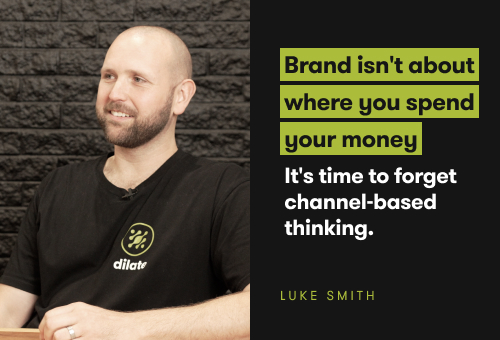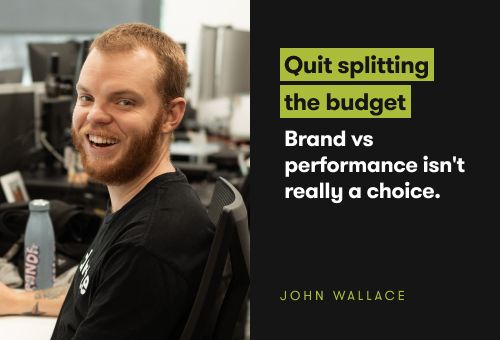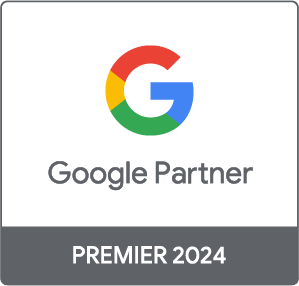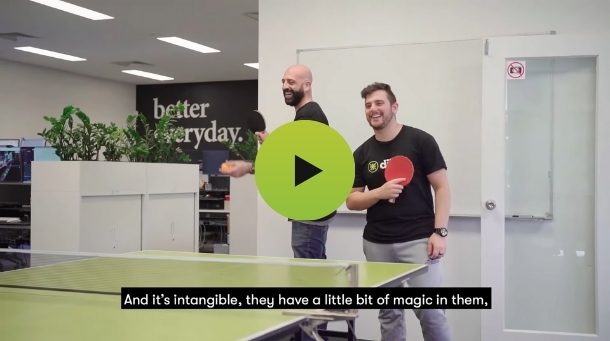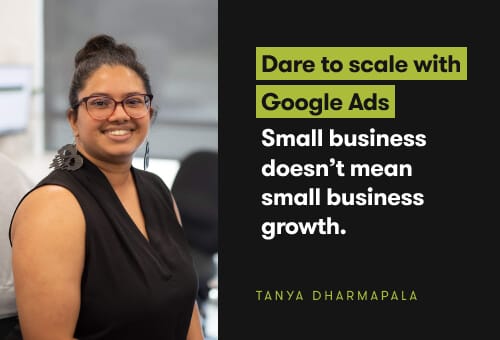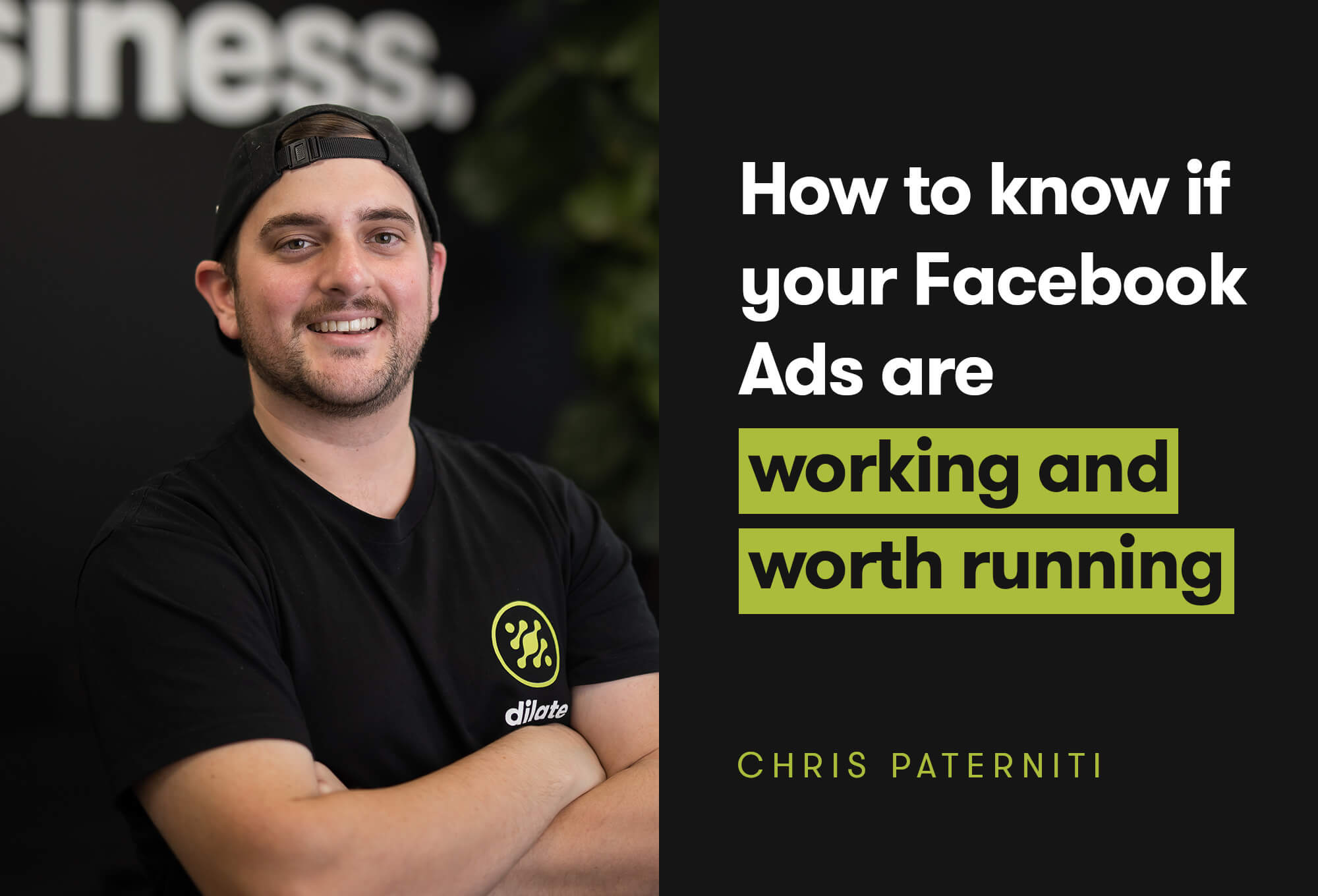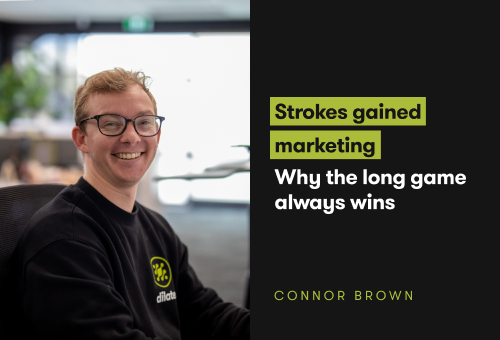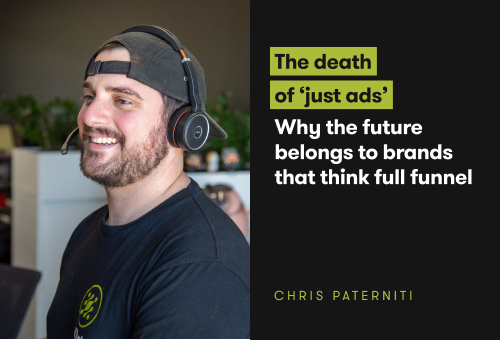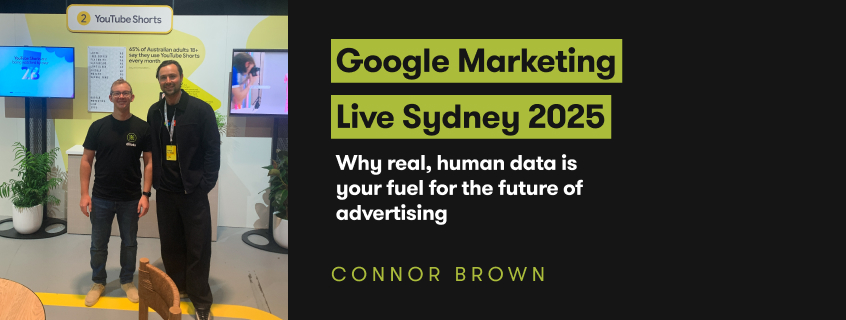
Google Marketing Live Sydney: Why real, human data is your fuel for the future of advertising
Late last month, I headed to Google Marketing Live in Sydney. Why? Because it's an event where we can get the drop on what’s happening, coming and changing in search. Google didn’t just share their product roadmap, but the intentions and research behind it - which is a huge deal! I heard their take on how people’s search behaviours are changing, the direction Google intends to take its products, and how we can make the most of it.
For those in a rush that want to skip to the end, here’s the core takeaway.
The future of search means leveraging Google’s AI performance models to drive results for your business. These models are fueled by getting high-quality, first-party data into Google’s platforms, which means that getting your data foundations right is absolutely critical for your future success in Search.
The modern user is chronically online, everywhere and all the time. Google claims that the traditional funnel is in some ways obsolete (we disagree, but more on that later), and the user journey is better represented by the 4 S’s. As a result, artificial intelligence isn’t just a tool we can leverage, but quite literally the future of user experiences and advertising effectiveness.
But that’s enough spoilers. Let’s get into it.
Navigating the "messy middle" with multi-modal AI
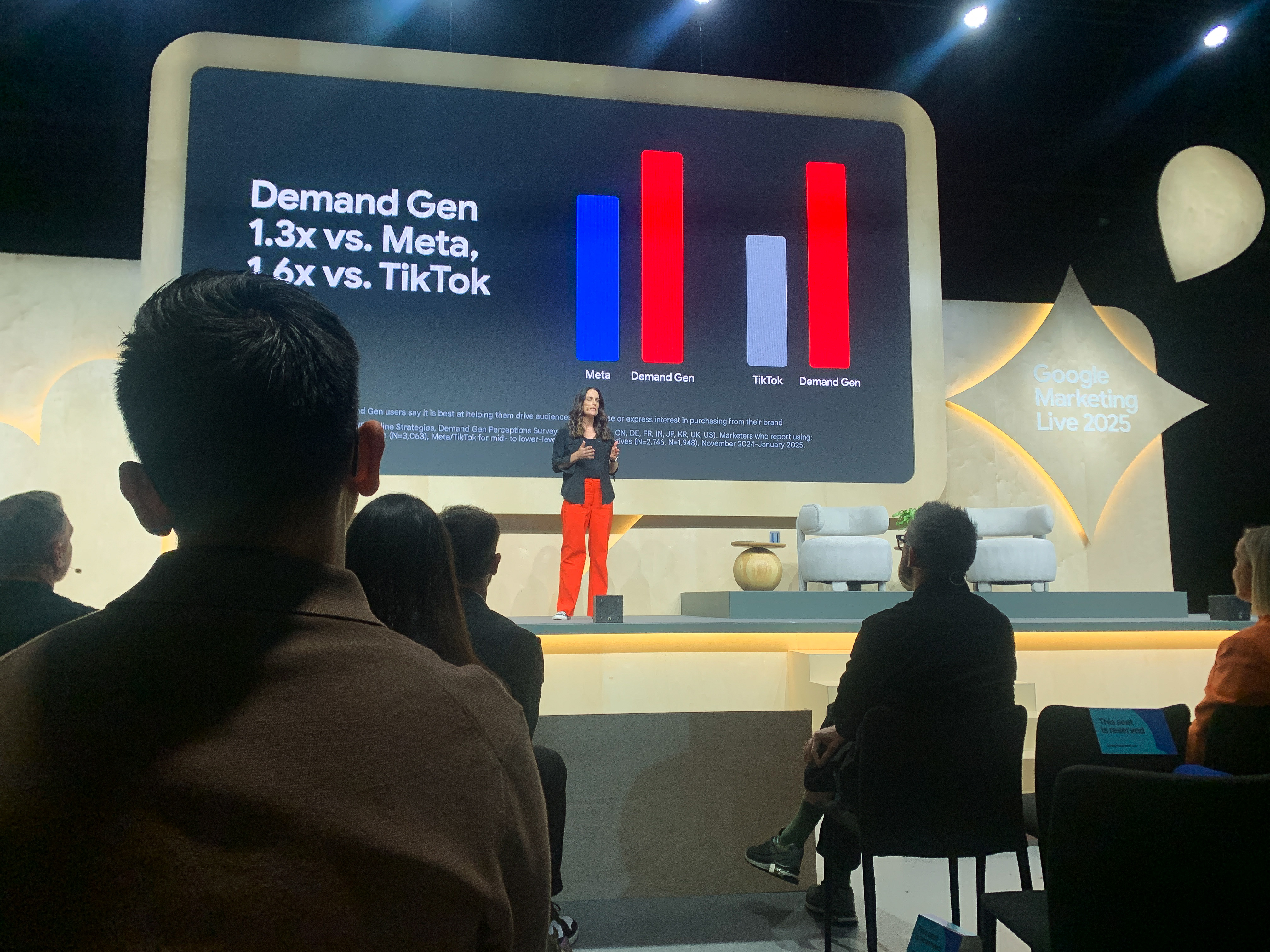
The first talk of the day, by Melanie Silva, VP and Managing Director of Google Australia & New Zealand, unpacked the evolving behaviours of online interaction. She highlighted the "4 S's" – streaming, scrolling, searching, and shopping – and the concept of the "messy middle," where users fluidly move between these activities in their discovery process.
This is the idea of the funnel being obsolete, but truthfully this is what the funnel has always meant. We don’t think Google got this wrong, we just think they were making a dramatic and slightly colourful point—one that was good, to be fair. The initial stages of the funnel, in this case, ‘discovery’ has always always been cyclical, non-linear and fluid. The funnel concept in marketing isn’t supposed to be literal, it’s a clever, useful device for understanding the customer’s journey and mindframes on their way to making a purchase decision.
But, we digress.
The key takeaway from Silva’s presentation is that AI has evolved to offer a more holistic, multi-modal experience, allowing users to search and discover through any of these methods and receive the most relevant results.
Silva illustrated this with a compelling example of two individuals seeking a desk light. Despite different initial search contexts – one for reading, the other for a gaming setup – and employing varied multi-modal search techniques (image, voice, text), AI's ability to understand intent and context ultimately guided both to the same physical store for the same product. Future AI Mode features, such as personalised "price-watching" alerts via Gemini, further underscore the depth of integration Google envisions.
What does this mean for you, and your advertising? It means that understanding your customers is quite literally more important than ever. To succeed in this space, we need to know exactly what motivates people to purchase particular products, and include this communication in our website material, so that AI can find, understand and recommend our products to the right people.
Personalisation and discovery redefined by AI
Another extremely important presentation was by Shashi Thakur, Google's Global VP of Search Ads and Ads on Google Experiences, which reinforced the central role of AI in discovery. He emphasised that products like Search and YouTube are primary hubs for these user behaviors, with AI Overview and AI Mode poised to revolutionise how users discover information. These features, with AI Overviews already here, and AI Mode slated for an Australian rollout later this year, promise to deliver comprehensive answers and solutions by leveraging Google’s vast data sets.
Thakur delved into the nuanced aspects of personalisation, noting that AI Mode will offer localisation based on geographic data and user history. A significant revelation was the "personalised context" toggle, allowing users to opt-in and grant Gemini access to more sensitive data, such as from Gmail, for richer, more contextualised search results. While the potential is immense, Google did not detail plans for user education on this powerful new feature.
Why Silva’s talk spoke to the Product P—and making sure you get it right—Thakur’s has implications for the Promotional P. Specifically, more of the promotion will be based on and drawn from your own website. Promoting products through owned channels and media is nothing new, but AI Overviews and now—AI search modes—implies this could be more impactful than we’ve ever seen.
The imperative of AI maturity: A BCGx perspective
A highlight for many (including me) was the session by Julian King, Partner and Director at BCGx. King presented a compelling framework for AI maturity in businesses, outlining four stages: Essentials, Scaling, Leadership, and Transformation. He stressed the urgent need for companies to assess their current standing and proactively take steps toward "Transformation."
The foundational elements for advancing AI maturity, King explained, largely involve robust first-party data collection, accurate data parsing, and sophisticated attribution modeling. His central message was clear: businesses that are experimenting with AI now, embracing a "trial and error" learning culture, are building a crucial competitive edge. This early adoption and forced setup are yielding invaluable results, positioning these pioneers ahead of their competition.
(We suspected this, and have been investing countless hours into figuring it all out. If you want to know more about what we’re doing, and what we can do for you, get in touch.)
"Power pack" innovations for performance
The event also showcased Google's "power pack" of AI-powered performance solutions, including updates to Performance Max (PMax), AI Max for Search, and Demand Gen. These products are designed to harness AI for optimal campaign performance in a multi-modal world (multi-modal being the whole text, voice and image-based mix of search inputs).
AI Max for Search addresses the challenges of traditional keyword lists for natural language queries, leaning into powerful intent-based targeting. With "keywordless" targeting – a term Google is increasingly embracing – AI Max for Search provides a "one-click enhancement" for existing search campaigns. Google reported that campaigns leveraging these features saw 27% more conversions by showing relevant headlines and landing pages, with the product now in open beta in Australia. The company also proudly announced over 90 improvements shipped to PMax in the past couple of years, alongside new channel performance reporting.
Case Studies: Real-world AI success
The most engaging segments of the day were undoubtedly the case studies from major Australian businesses:
- The Iconic shared their journey into Performance Max, underscoring the critical importance of cultivating a "test and learn" culture within their teams. Their approach involved experimenting with new Google Ads formats and bidding strategies to maximise channel value.
- Aussie/Lendi demonstrated the power of value-based bidding. By integrating their CRM to link qualified appointments with the actual value of home builds, they provided Google's AI with high-quality first-party data, enabling the system to drive more valuable conversions. Their use of geo-tests further verified conversion and value lifts.
- Commonwealth Bank presented a refreshing case for video in a saturated market. Their representative, known for his direct and pragmatic approach, candidly acknowledged Google's role as "salespeople" for new products, yet committed to trialing them. They leveraged Demand Gen to reach a broader audience, utilising audience signals and intent for products like everyday banking and credit cards. An A/B test against existing social channels revealed Demand Gen campaigns delivered a 6x better return, highlighting the significant potential for similar client scenarios.
The consistent takeaways here? Testing is incredibly important. We’re not testing arbitrary things, either, but testing what resonates with our customers. That’s one of the key themes here—personalisation and changing search patterns mean an obsession with customers is not just a nice-to-have, or an easy way to get a leg up on competitors, but absolutely, undeniably critical to success in modern marketing.
Modern measurement and the path forward
Discussions on measurement emphasised a "modern measurement game plan" encompassing Marketing Mix Models (MMM), attribution, and incrementality. Google highlighted Meridian, its open-source MMM, as an innovative solution for cross-channel visibility and addressing key measurement challenges. This tool allows advertisers to build and run in-house models, providing a privacy-safe way to understand campaign impact and optimise budget allocation.
Andrew Hughes, Global Head of SEM at Xero, offered a practical caution on experimentation. While acknowledging that businesses running more experiments see a 30% better marketing performance, he advised against continuous changes during critical periods like sales. He used the analogy of a plane being most efficient at 30,000 feet, emphasising the need for strategic stability. Hughes stressed the importance of clear conversations with finance, focusing on metrics like payback period, Customer Lifetime Value (CLV), and customer acquisition value, to justify scalable budgets and recognise brand as a vital "tailwind."
This is a great take, and a yet another reminder on the purpose of testing; understanding what resonates with customers, and sticking with it. We don’t test for fun, we test to find where to spend our advertising dollars to get the most return. Once we’ve found the right place, we double-down.
AI: A unifying, and surprisingly human-ifying force.
Melanie Silva concluded the event by reiterating that the "power pack" of Google's products is purpose-built for the multi-modal search methods prevalent in the new AI-driven world. Critically, ads will appear within AI Mode and AI Overviews by year-end in Australia, designed to be helpful integrations rather than intrusions. This reflects Google's overarching focus on enhancing the consumer experience, believing that it ultimately benefits advertisers by ensuring relevant engagement.
The recurring theme and takeaways are both consistent and clear. AI is leading to a massive shift in the way businesses advertise online, and the ways consumers are behaving online. Counterintuitively, but perhaps inevitably, the age of AI is making people more important than ever. Understand who your brand is for, what they care about and what makes them tick. Obsess over your customers, embrace experimentation and prioritise robust data foundations. The future of digital advertising is here.


